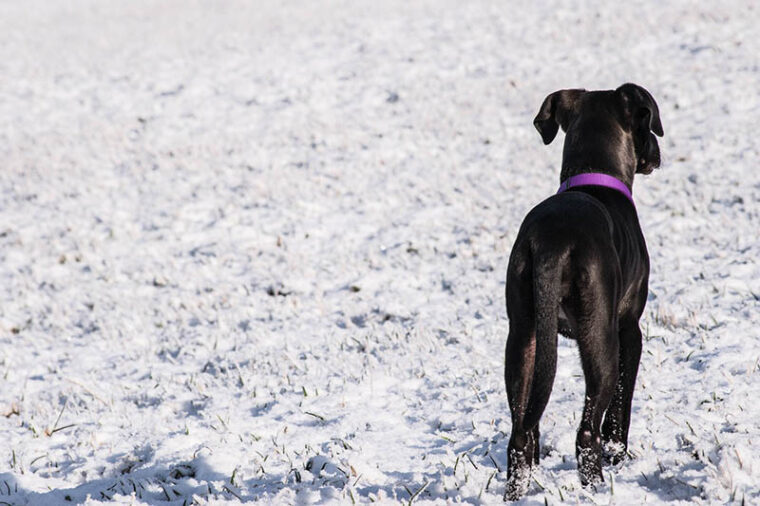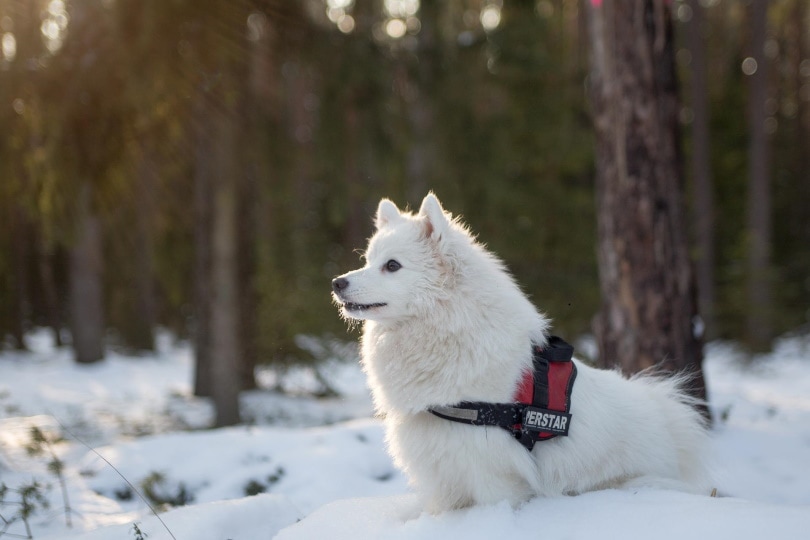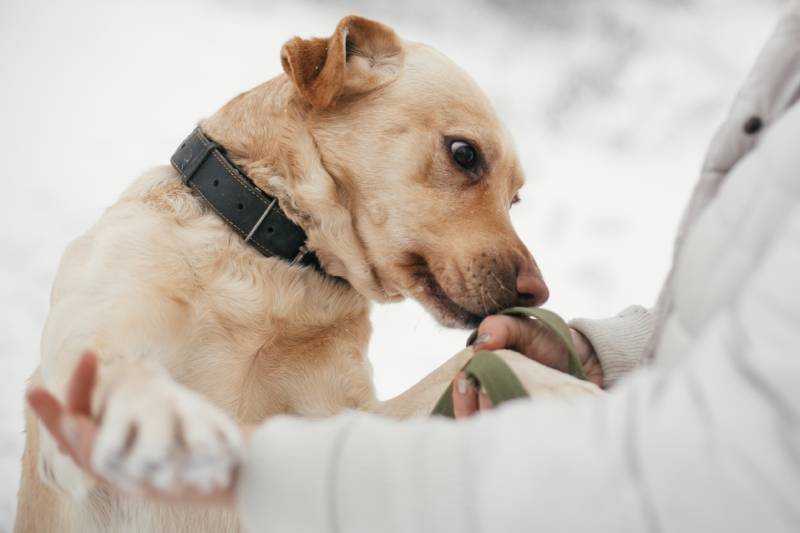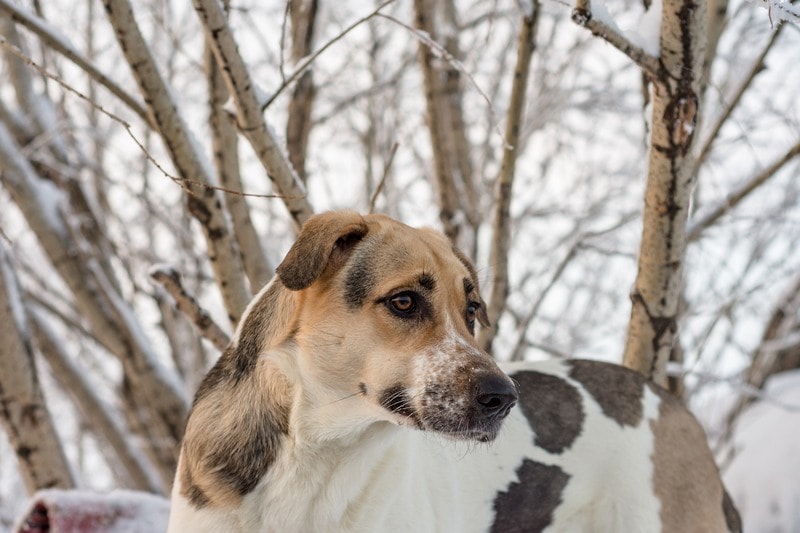
Winter is right around the corner, and everyone thinks about getting their homes and yards ready for the cold season. While your property is important, don’t forget that you must also help your canine pal get ready for the winter season.
Depending on what part of the country you live in, hypothermia and frostbite can be genuine concerns for your furry friend. The changing temperatures can make your pet sick even if you live in a warmer climate. In this guide, we’ll give you our top 10 safety tips to help keep your pets warm, toasty, and out of danger this upcoming winter season.
The 10 Most Important Winter Safety Tips for Dogs
1. Be Prepared

The first thing you need to do is be prepared for whatever the winter might bring. You probably already have a medical emergency plan for the humans in your family, so make sure your pet is included.
Start with an emergency kit containing vital medications and enough food and water to last your pet for 2 to 4 weeks to be safe. In most cases, you’ll never need to use your dog’s emergency kit; however, it will be invaluable if a disaster occurs.
2. Avoid Thin Ice
There are several stories in the news every winter of dogs having to be pulled out of icy water because they fell through the ice. While it may seem fun to skate and slide across the ice, it can end in disaster for you and your canine buddy if the ice is thin and cracks under your weight.
Many people and dogs have died because they couldn’t be rescued in time. If you’re unsure that the ice you’re standing on is safe, avoid it at all costs.
3. Protect Your Canines Paws
During your winter walks, your dog will be stepping in the snow, ice, de-icers, salt, and possibly antifreeze. All of these substances can irritate and injure your pet’s feet. Make sure that you wash and dry your dog’s paws every time you come in from taking a walk.
It’s also a good idea to put soft, warm booties on your dog before you go for your walks to protect their paws as much as possible. Remove the booties after your walk and wash them. It’s also still a good idea to clean your pet’s paws with warm water and shampoo to remove any debris.
4. Stay Inside

One of the best ways to avoid your dog getting sick from the cold is to stay inside when the weather is frightful outside. Even if your dog is big and fuzzy, it will need time to get used to the colder weather.
Take short jaunts outside so your pet can go potty, then stay inside as much as possible until your pet becomes accustomed to the freezing weather. Even then, it’s best not to leave your dog outside for long periods.
5. Limit Bathing
While it may be tempting to keep your dog on its summer bathing schedule, the truth is that a dog doesn’t need baths as often during the winter. Too much bathing can remove essential oils from your dog’s skin that keep them healthy.
6. Always Provide Proper Shelter
As a pet parent, you must always provide your pets with proper shelter. If your dog has to be outside for any length of time, make sure that it has a doghouse that is either heated or has plenty of straw to keep it warm until you get back home and take it inside with you.
When indoors with your dog, keep your pet’s bed close to a heater vent so it can get warm after a chilly walk.
7. Consider the Age of Your Dog

Just like humans, very young or very old dogs have a harder time dealing with the cold than dogs in their prime do. The romps through the snow you take with your 3-year-old dog might be too much for a puppy or an aging canine.
Keep puppies and senior dogs inside as much as possible, only taking them out to use the bathroom and for a short walk. They cannot regulate their body temperature as efficiently as a healthy adult.
8. Avoid Jack Frost
Dogs can get frostbite on the tips of their tails and the flaps of their ears. It’s better to keep your dog inside when it’s below freezing outside. However, if you can’t, keep an eye out for the signs of frostbite in your pet. The major signs of frostbite include the skin turning white or a tinged blue.
In this case, it’s best to get your dog to the vet for diagnosis and treatment as soon as possible. If possible, keep your dog inside during blizzards and icy conditions, so you don’t have to worry about frostbite.
9. Watch Out for Antifreeze Spills
Antifreeze is highly toxic to animals. Even one teaspoon of antifreeze swallowed by your dog can lead to kidney failure. Symptoms of antifreeze poisoning include seizures, excessive thirst, vomiting, drooling, and staggering.
When you’re out for your walks, be careful where your dog is sniffing, and if you think your dog has gotten into an antifreeze puddle, get it to a vet right away.
10. Dress Your Canine Appropriately

Those cute little sweaters, coats, and boots you see on many dogs during the frigid winter months aren’t used to make the dogs look adorable. Okay, they can be, but mainly they’re used as protective garments to keep your pet warm when you’re outside in the cold.
Make sure your dog has a decent winter wardrobe, just as you do. Several types of canine jackets and booties are available at pet stores and online retailers.
Signs That Your Dog is Too Cold
Your pet can’t tell you when it’s too cold, but you can learn the signs that indicate your pet must retreat to a warmer location.
Return to your home if you notice any of these signs when you’re outside with your dog in the cold. If it continues to show signs after warming up, it’s best to take it to a vet for treatment.
Conclusion
Dogs can get too cold when playing outside, so make sure you take extra safety precautions when the temperature starts to plummet this winter. From dressing your dog in warm clothing to watching for signs that it’s becoming too cold, there’s a lot you can do to keep your dog safe when the temperatures are frigid outside.
Featured Image Credit: Paul Ramsay, Pixabay








